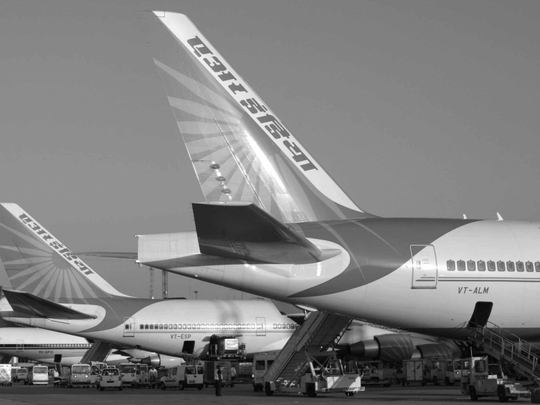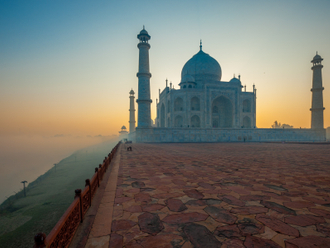
India cemented its place in aviation history in 1911 as host to the world’s first official mail delivery by airplane when Frenchman Henry Piguet piloted a Humber biplane carrying about 6,000 pieces of mail from Allahabad over the Yamuna river to Naini.
Although much transport infrastructure had been laid down during colonial years, it is since independence that the sector truly came into its own.
GN Focus looks at how the means of getting from A to B in India have changed.
National airlines
The nationalisation of India’s airlines under the 1953 Air Corporations Act (ACA)had a tremendous impact on the young nation’s aviation sector. The government had already purchased a majority stake in Air India, launched in 1932 by the industrialist J.R.D. Tata, but took full control in 1953, the same year Indian Airlines was formed as a domestic carrier. Symbolised by the Maharaja, Air India earned itself a positive reputation both for service as well as its role in airlifting refugees from war-struck areas such as Kuwait and Yemen.
The ACA was repealed in 1994 and private operators took to the country’s skies again, led by Deccan Airways. Of those early players, Jet Airways remains the only one still flying in 2017. Following successive rounds of legislation, the market is now a mix of full-service and budget carriers.
As for Air India, financial issues have led to government attempts at privatisation. Tata is once more in talks to take over the airline, heralding what some call a new dawn for the carrier.
Rickshaw rides
No country can boast larger numbers of autorickshaws than India. Since its introduction by Bajaj Auto in 1959, the three-wheeled tuk tuk has established itself as a reliable and economical ride. Three million vehicles now operate across the country, manufactured by different firms.
Originally built to run on petrol and two-stroke engines, rickshaws were identified as major polluters, and in 1998, two-stroke engines were banned in favour of natural gas vehicles. While widely adopted, vehicular pollution levels remain a worry.
Last year, rickshaws were caught in the middle as local ride-sharing apps Ola and Jugnoo faced off against global giant Uber for business in the smaller cities. Uber lost the round, but the war is a testament to the rickshaw’s longevity. The next step? E-rickshaws that run on batteries.
Rail giant
There’s a reason Indian Railways is the world’s eighth-largest employer and the subject of several management studies. The first railway line on the Indian subcontinent ran about 33km from Bombay to Thane in 1853, but since then the rail giant oversees 120,000km of multi-gauge track that carries some 22 million passengers a day and 1.1 billion tons of cargo each year.
Some highlights along the way include the launch of the Rajdhani Express service between Mumbai and New Delhi in 1969. Suburban rail transport got an upgrade in 1984 when Kolkata launched India’s first underground rail system, completed with the help of East German engineers and Soviet experts. There are now nine metro systems across India and one monorail in Mumbai.
Autonomous cars
Roads carry 90 per cent of passenger traffic and two-thirds of freight in the country. The International Road Federation says 146,000 people die in India annually in road accidents. Self-driving vehicles could bring the number down. Self-driving vehicles could play a role in bringing the number down. Last year, Dr Roshy John, Head of Robotics and Cognitive Systems at Tata Consultancy Services, outfitted a $3,500 (Dh12,860) Tata Nano with actuators, sensors, cameras and a robotic system to control the gas and brake pedals and steering, making the vehicle autonomous. But the road to self-driving vehicles is fraught with obstacles. “Indian roads present a true deep learning challenge,” Dr John told Bloomberg. Leif Nielsen, Industry Sales Group Lead for Transportation at Intel Asia-Pacific, agrees. “In the Indian context, it is quite amazing the way the vehicles need to talk and not only react to local conditions but also talk to the infrastructure around them,” he tells GN Focus.
Autonomous vehicle systems operating in India would need to be able to interpret and react to a variety of scenarios: pedestrians rushing across a street at random, stray cattle, oddly merged lanes and poor signage. “” On a recent visit to the country, then Uber CEO Travis Kalanick said India would be the last place on Earth to see autonomous cars on its roads. Google CEO Sundar Pichai said something along the same lines a few months later. Nitin Pai, Senior Vice-President and Head of Strategy and Marketing at Tata Elxsi, recently told Bloomberg, “The driverless car is ready for the road. But is the road ready for the car?”
Current laws do not allow purely autonomous driving – you must be able to grab the wheel to assume control of the vehicle at any point. The rules aren’t changing any time soon. “We won’t allow driverless cars in India,” Union road and transport minister Nitin Gadkari told the Hindustan Times last month. “We won’t allow any technology that takes away jobs.” Another hurdle facing autonomous cars for the masses is cost. “Premium brands will the first ones that do autonomous... for some of the systems – the local radars, cameras and the rest – to turn on just some of those subsystems, is $10,000,” explains Nielsen. “You’re not going to put $10,000 of technology in a Tata Nano, which costs $3,500, right? That doesn’t make any sense.”
He says the private sector will lead the push for autonomous, starting from closed environments. “What we’ll be seeing in India is going to be campuses, especially Tata Consulting or Tech Mahindra, I think they would have the first sort of [autonomous] campus taxi service.” However, Nielsen believes that the solutions arising to meet challenges on Indian roads will benefit the autonomous driving world at large: “If you can get autonomous driving to work in India, it’ll work anywhere. The variables there are so broad.”






